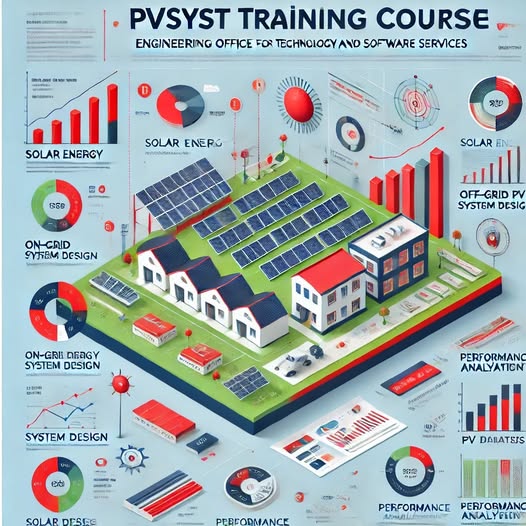
Course Code: 1054-P
Duration: 25–30 Training Hours
Level: Beginner to Intermediate
This course provides hands-on training in the design, simulation, and performance analysis of photovoltaic (PV) solar energy systems using PVSyst software. Participants will gain the technical skills needed to plan, optimize, and assess solar systems under various operating conditions using real-world scenarios.
Enable participants to design and analyze solar PV systems using PVSyst
Understand PV system components and operating principles
Evaluate system productivity under different climate and installation conditions
Create detailed technical and financial reports for solar projects
Solar energy engineers and technicians
Electrical and renewable energy engineers
Sustainability consultants and energy planners
Anyone interested in solar PV system simulation and performance
PC or laptop with Windows OS
Latest version of PVSyst software (demo or full)
Excel or spreadsheet software (for data processing)
Access to meteorological databases (e.g., Meteonorm, PVGIS)
OS: Windows 10/11
Minimum: i5 Processor, 8 GB RAM, 2 GB disk space
PVSyst v7.x installed
Internet connection for downloading weather data
Instructor-led live sessions (onsite or online)
Real project-based design tasks
Hands-on simulation with PVSyst
Quizzes, assignments, and final project
Interactive discussions and feedback
📌 Session 1: Getting Started with PVSyst
Overview of PVSyst and its role in solar design
User interface and workspace navigation
📌 Session 2: Basic Concepts in Solar PV
Types of solar cells and PV modules
Principles of PV system design
📌 Session 3: Site and Weather Data Configuration
Importing solar radiation and climate data
Using weather data from global databases
📌 Session 4: Designing an On-Grid PV System
Selecting system components (panels, inverters, loads)
Simulating system output and performance
📌 Session 5: Designing an Off-Grid PV System
Battery selection and charge controller configuration
Evaluating storage and energy reliability
📌 Session 6: System Simulation and Loss Analysis
Simulating energy output and identifying losses
Analyzing key performance indicators
📌 Session 7: Reporting and Interpretation
Generating professional reports
Interpreting results and improving system designs
📌 Session 8: Full Practical PV System Design
End-to-end design of a solar PV project
Financial analysis and return on investment (ROI)
📌 Session 9: Performance Optimization and Sensitivity Analysis
Evaluating shading, tilt, and climatic impact
Fine-tuning system design for maximum efficiency
🔆 Ability to professionally design and simulate solar PV systems
📊 Proficiency in generating detailed analytical reports
⚡ Understanding the impact of environmental and operational factors on system performance
💼 Hands-on experience in real-world solar project planning
